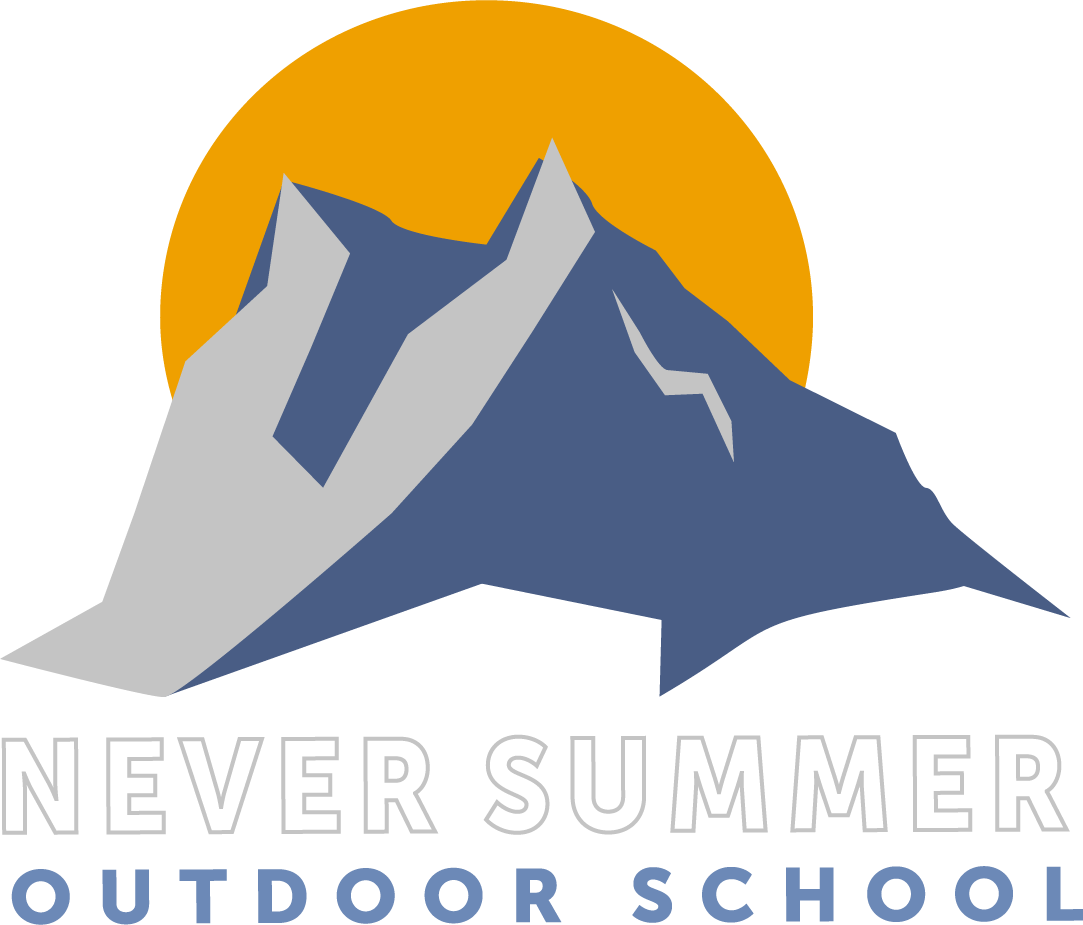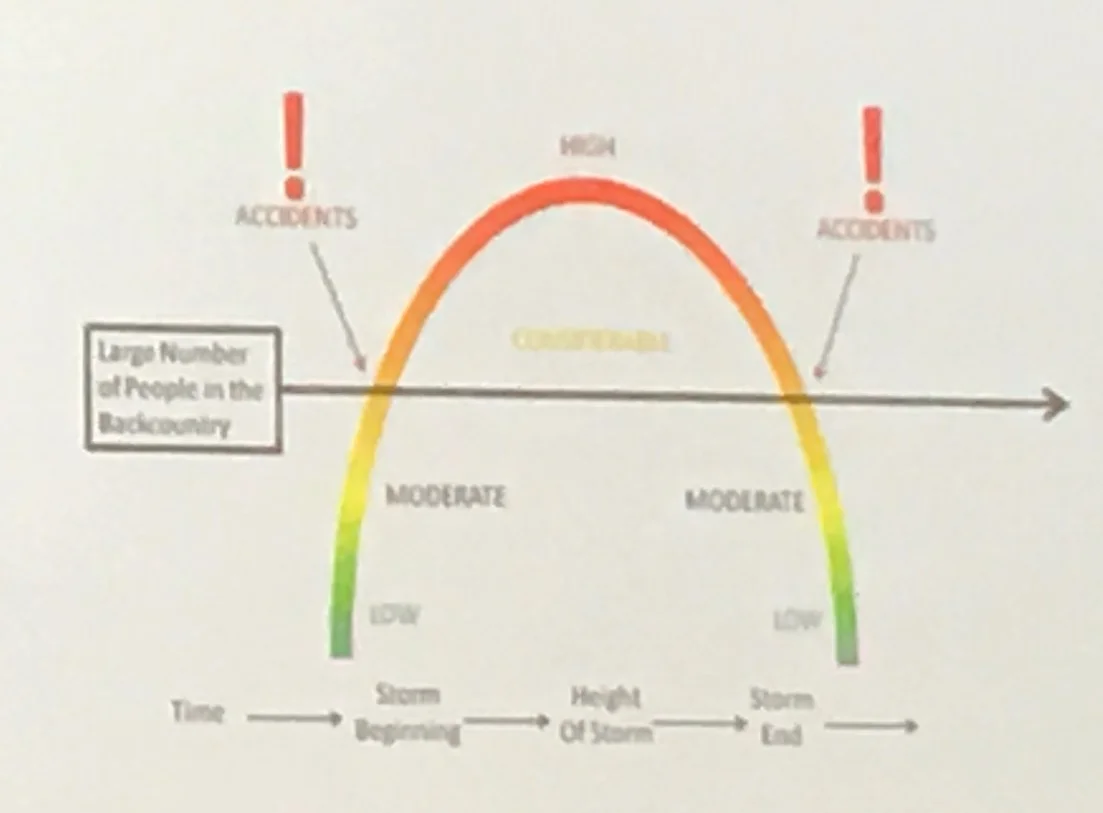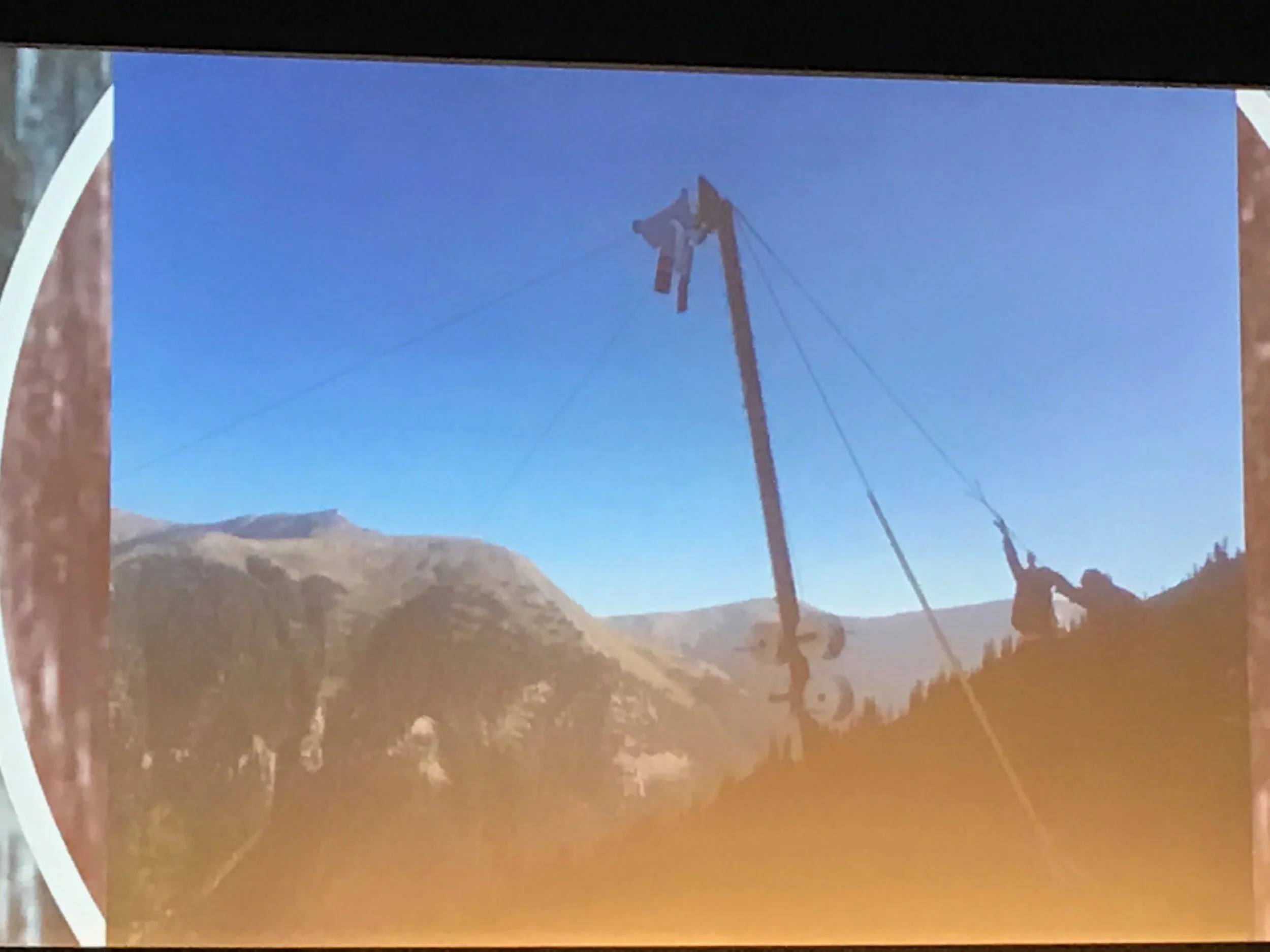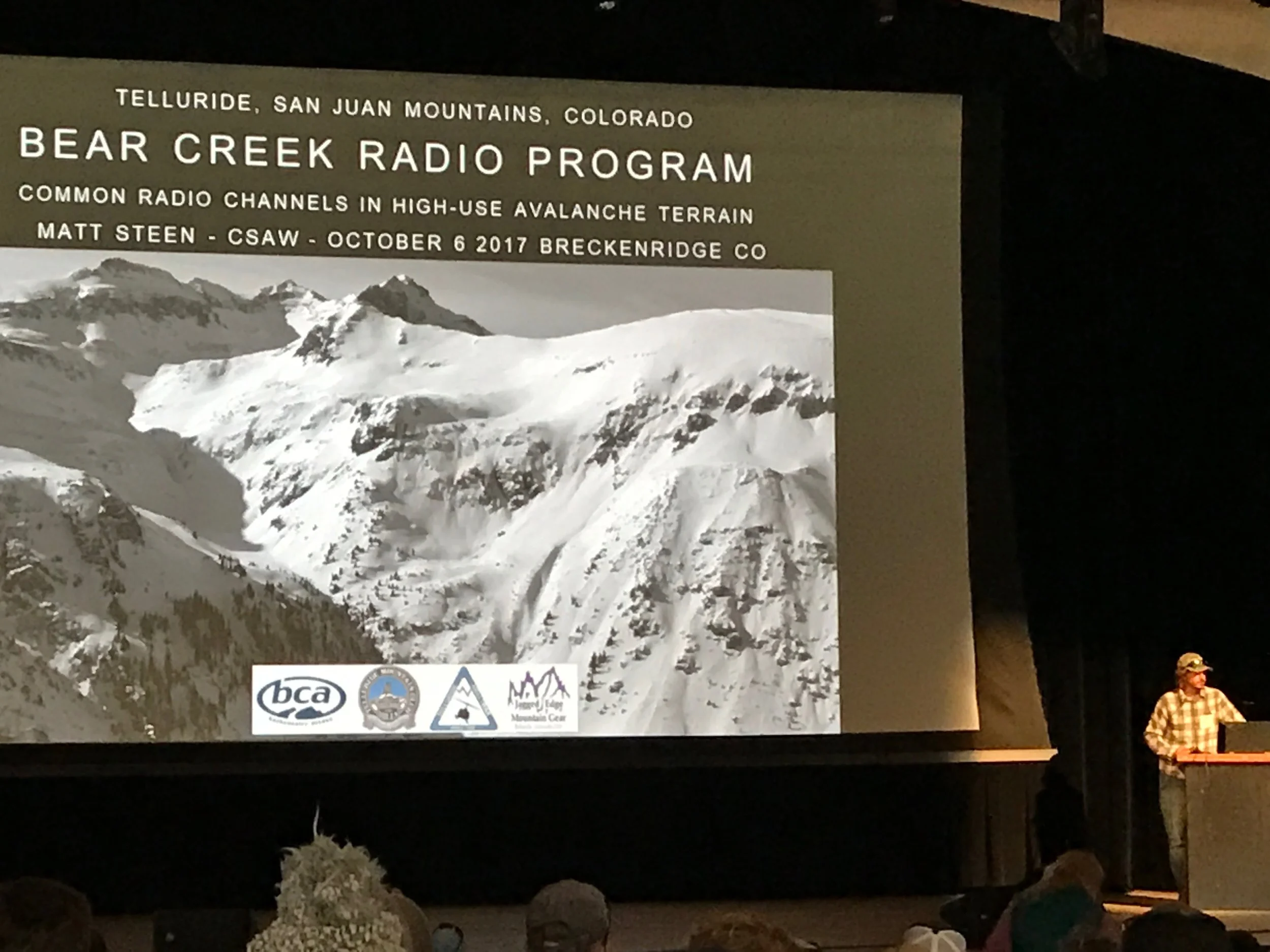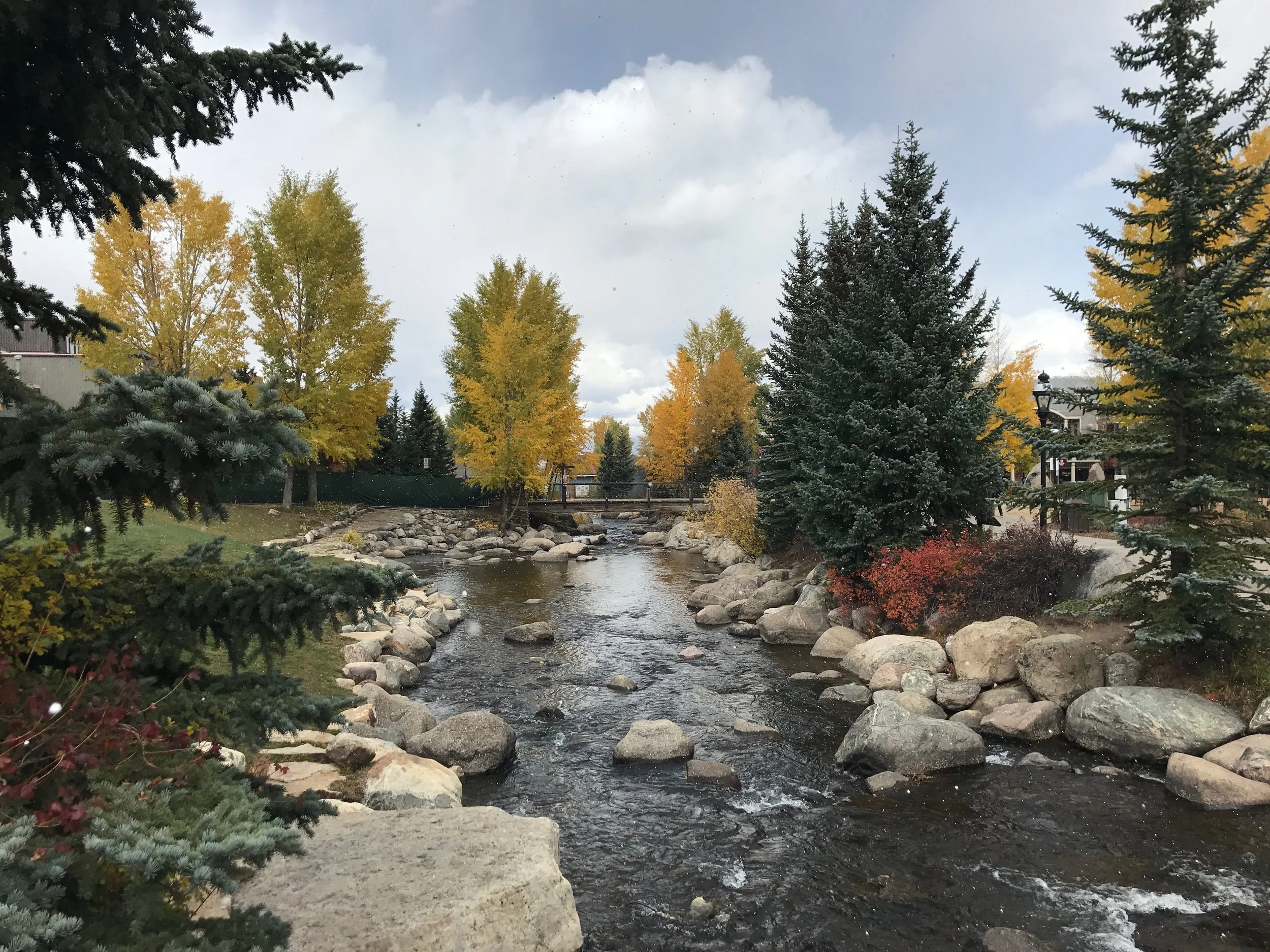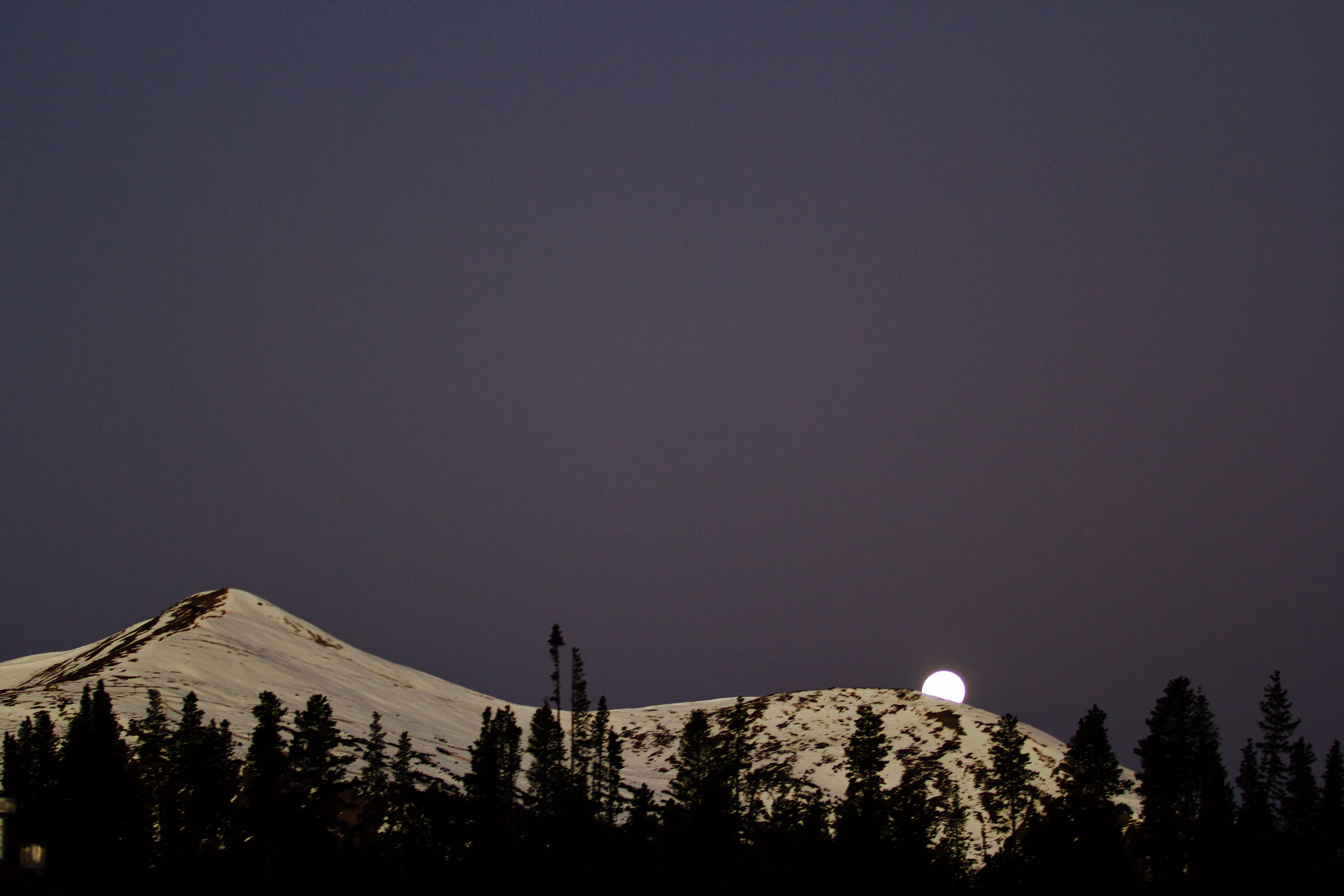2017 Colorado Snow and Avalanche Workshop Recap
Most of the Fort Collins crew that came down for the Colorado Snow and Avalanche Workshop with a beautiful backdrop in Breckinridge.
Session Recaps:
Forecasting avalanches in Afghanistan - Doug Chabot
Doug Chabot (the man, the legend) kicked off the day with a talk on avalanches in Afghanistan, Pakistan and Tajikistan and the issues around forecasting danger levels in remote areas.
Doug is part of a team of avalanche trainers around the world called FOCUS, with a goal of reducing avalanche deaths in the remote areas of the Himalayas. He had some crazy stories about villagers experiencing avalanches every day, all winter long. People had told him about hiding behind boulders and digging themselves out, villages being hit multiple times, using sticks as probes and through it all not wanting to leave their villages. One of the biggest needs was to educate the locals on how to use thermometers, anemometers and other weather tools and call in the data each morning. It reminded me of the CoCoRaHS network of observers in the US, with the added issue of language and communication barriers to develop a similar system. They are seeing good results and have evidence of saving potentially hundreds of lives in the last couple seasons with better education and data.
Fatalities are trending down, are we smarter or just lucky? Russ Costa
I had the pleasure of hearing Russ Costa talk for the first time last year at the International Snow Science Workshop. Russ is a professor of neuroscience in Utah and has been spending some time studying avalanche accidents from a behavioral science point of view. Based on the last decade or two, Colorado and Utah stats show that the number of people caught, buried or killed are trending down. Although we can show that there is a slight decline in the number of accidents in these two states, can we attribute this trend to education, better skills or better forecasts or are we just lucky? It's an interesting question to ask in order to make sure that we're not assuming where the lift in safety is coming from. I want to believe that riders of all types are getting smarter but it's hard to point to empirical evidence to prove that yet.
Nice graphic from Utah Avalanche Center showing the storm cycle and associated increase and decrease of avalanche danger as well as the sweet spot for avalanche accidents.
CMC Avalanche Safety Program - Roger Coit
It's an exciting time to enter the field of avalanche safety in Colorado. The state with the largest number of skiers and the largest number of avalanche fatalities now has one of the most robust training programs for aspiring avalanche workers. The program at Colorado Mountain College will span two winter seasons with 11 courses (10 brand new), 25 field days with instructors, and many more self-driven field days. Want to train for professional safety jobs, including mentoring and industry partners. Goes over two winter seasons. They are also offering a hybrid program for working folks or non-Coloradans.
Snowy Torrents Volume 6 - Spencer Logan
The snowy torrents are like the deep sea; they seldom return their victims alive. This quote was used by Dale Gallagher to describe the fierceness of snow avalanches when he edited the first volume of avalanche case studies, covering 1910 to 1966. Since then other volumes have mostly recapped the time since, with this volume aggregating those from 1996 to 2004. There are many reasons for the fatalities, but the patterns the editors found were a lack of rescue gear, traveling alone or during high danger or just poor terrain choices. The work highlighted the fact that although we have ample media record for fatal accidents, we seldom have much of a record for significant near-misses. There will be more volumes to fill in the gaps in case studies in the coming years.
Knox Williams signing a copy of Snowy Torrents for me.
Avalanche Worker Safety - Ethan Greene
Ethan gave a quick presentation on a non profit focusing on building a database for near-misses involving avalanche workers. The database is free and anonymous, intended to help understand the issues facing avalanche workers with the goal of reducing accidents. Anyone can report at avalanchenearmiss.org
A-Basin's New Terrain and New Avalanche Problem - Ryan Evanczyk
A-Basin has a robust avalanche safety program as much of it sits at or above treeline with significant overhead hazard. By the numbers, they throw 850 handcharges per year and shoot 200 Avalauncher (similar to a Howitzer) rounds per year. As they are preparing to open new terrain called the Steep Gullies in the Beavers, they are developing ways to mitigate the avalanche hazard for guests. This area is not very conducive to patrollers throwing hand charges and it's also not fit for an Avalauncher since an accidental overshooting would endanger buildings and lifts. In addition, the 8 or 9 chutes are so narrow that any explosives would have to be placed very precisely, so they needed a new way to release charges.
What they decided to go with was an explosive delivery system (or EDS), formerly called a Bomb Tram. This is like a backcountry zipline where instead of carrying kids the trolleys carry bombs to be detonated just above the snow surface and start avalanches. This technology is not new, but is typically only used for specific locations. Next up for the gullies is a lift in Summer of 2018, I'm excited to see the terrain in the not too distant future!
This picture didn't turn out great, but gives an idea of what the towers holding the explosive delivery system look like being installed.
Telluride Radio Program - Matt Steen
Matt covering how an innovative program to improve backcountry communication has worked for the Telluride area.
Bear Creek Drainage, next to Telluride Ski Area, gained a lot of publicity in the early 2000’s and was then was closed for years by the forest service for mining. Through litigation the access was reopened in 2014, then a local skier has bought the land from the mining company in order to preserve access. The terrain lures backcountry skiers frequently, which has caused numerous problems due to the lack of communication between parties. Even though 60% of groups traveling in the area had radios, only 10% were actually communicating with other groups.
The Telluride Mountain Club (started by the late, great Peter Inglis) started a radio program to make even more radios available and create a standard for what channels to use in specific drainages. Since then, communication between groups has increased significantly, begging the question of whether this effort is worth replicating in other areas of Colorado. Could we benefit from trying to get most ski touring groups on South Diamond Peak to use a specific channel?
Naturalistic Decision Making – Russ Costa
Russ came for an encore talk about ways to improve decision making. We know a lot of the decision making errors that we make as skiers, and a lot of those could be corrected if we give practictioners more ideas of what signs to be looking for. He believes we can train people to understand many aspects that will help them make better decisions.
Persistent Slab Avalanches – Jason Konigsberg
Jason is a forecaster with the CAIC, and wanted to look at some of the data to understand if we could understand impacts to persistent slab problems. He used 90 avalanche cases where the avalanche went to the ground and looked at nearby snowfall data to understand how snow events increased the danger. He found a strong correlation between even incremental snow events and releases as well as a significant decrease in avalanches after 7 days of dry weather. This type of data could help forecasters and skiers to use real data to make decisions in the backcountry.
Snowpack layering – Kevin Hammonds
Kevin cut right to the chase and said that when evaluating weak layers in dry snowpacks – leave your thermometer at home. This was received by an audible gasp from the audience of snow professionals.
Kevin's research focused on micro-measurements of temperature gradients in the snow, showing that our field techniques for measuring temperature are not very accurate. The project was based on a significant rain event across the western US, including Utah, on MLK weekend in 2011. I remember skiing in Utah the month after this event and learned a lot about how rain effects snow, which is unusual mid-winter in Colorado. In one way, it's "raises the ground level" and stabilizes the snow, but in another, it can forms a new bed surface for avalanches to run on.
The data shows that we could potentially use some sort of multiplier to estimate the actual temperature gradient at an ice interface. He also speculates that practicioners could likely benefit from using their hand loupe (field scope) to identify faceting, which may give us more accurate data than thermometers. trying to understand whether our field techniques are Winter precipitation picture could be good for basic intro for avy courses.
Talking about avalanches – Colin Zacharias
I'll admit it, Colin is one of my favorites, and not just because he taught my Level 3 course. Colin has spent two lifetimes, maybe three, working on the snow as a forecaster, guide and consultant. He has helped develop some of the most innovative techniques for increasing risk management in the operations he's worked for, and has helped the rest of the industry interpret those techniques for other programs. He summarized what he believes have been improvements to improve communication about avalanches over the past two decades.
- Rules of engagement – operations and groups making consensus decisions where everyone has a voice, and any one person has a veto.
- Using run lists – this creates an avenue to talk about where we should, or should not ski and gives a voice for historical knowledge to augment weather and snowpack data.
- Name and Blame specific weak layers in snowpack – dating and tracking persistent weak layers.
- The Avalanche Problem – in the last ten years we've started defining the hazard as location and size, which has increased efficient communication
- Identifying Uncertainty – rating for the forecast confidence (poor, fair, good) and identifying what information do we need to reduce our uncertainty
- Fracture Character/Propogation propensity – understanding the character of the fracture has added enormously to our ability to predict avalanches
- Strategic/operational mindset – this technique is just starting to catch on in the US, where operations or groups can identify how they match their goals with the conditions
- Using technology to share info – the first best example of this was the InfoEX in Canada where professionals were (and still are) able to share details of conditions with each other. Today in Colorado, we are the beneficiaries of the CAIC's enormous work to catalogue and publicize reports from the backcountry.
Colin expressed that communication will help reach our goals, and that we have to stop making decisions based on assumptions.
Seasonal weather forecast - Nick Barlow
It's looking like we're heading for a neutral to weak La Nina for this winter. The best way I've heard La Nina described for Colorado is that it splits the state, north to south, roughly at I-70. The northern mountains usually receive more precipitation and colder temps, and the southern mountains receive less precipitation and warmer temps. Nick puts the chances at about 40% of this forecast coming true - is that enough to book that trip to Steamboat or Jackson?
Moonset the morning of CSAW
